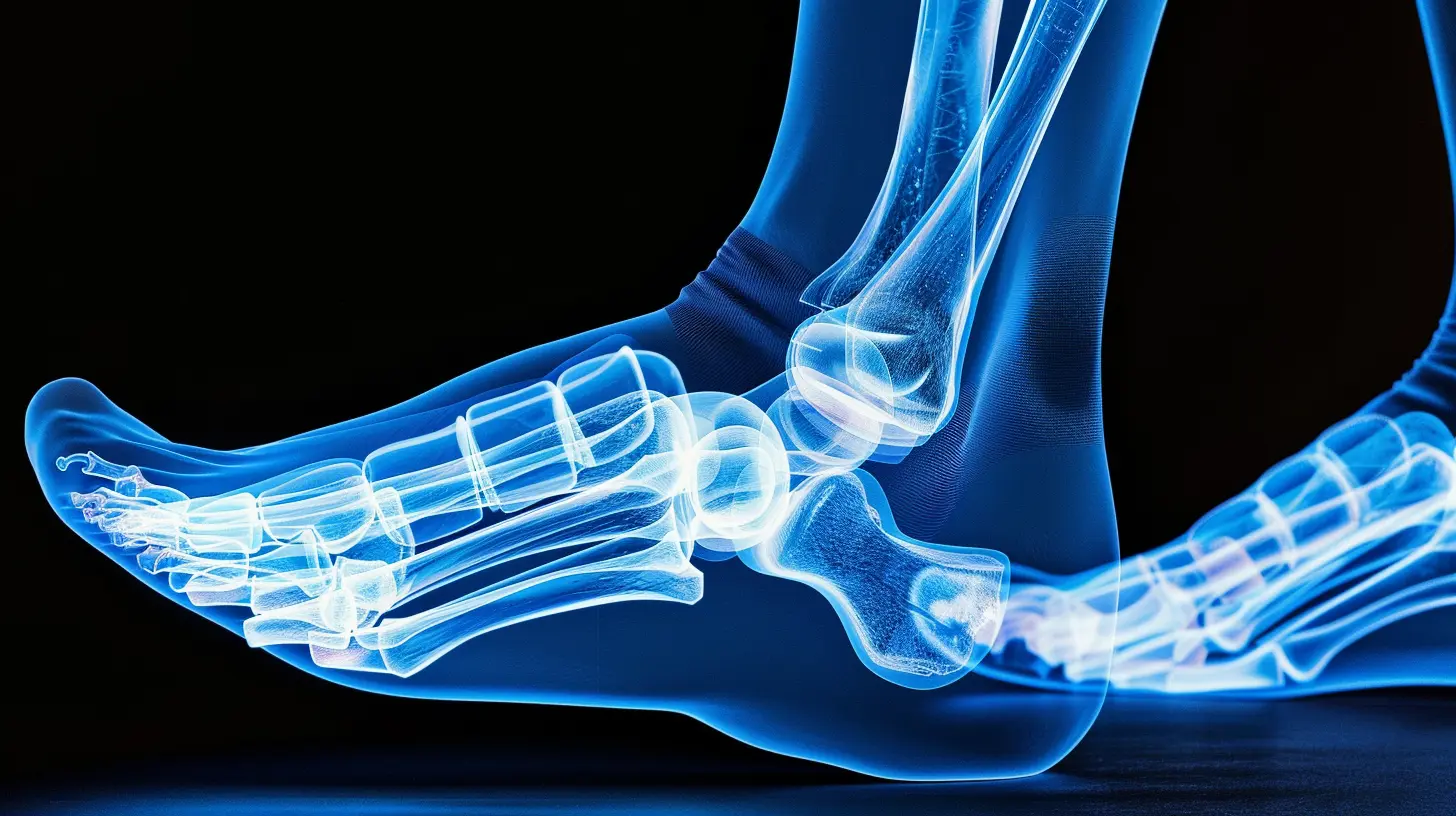Injury Prevention for Runners: Tips for Staying on the Road
26 November 2024
Running is one of the simplest, most accessible forms of exercise. You don’t need fancy equipment, just a good pair of shoes and the open road. But as straightforward as running may seem, it comes with its fair share of risks. Injuries can strike even the most experienced runners, sometimes sidelining them for weeks or even months.
Whether you’re training for a marathon or just enjoy the occasional jog, injury prevention should be at the top of your list. So how can you minimize the risk of injury and stay on the road? Let’s dive into some practical, effective tips that can keep you running strong.

Why Do Runners Get Injured?
Before we jump into the tips, let’s take a step back and understand why runners get injured in the first place. Running is a repetitive, high-impact activity. With every stride, your body absorbs a significant amount of force. Over time, if your muscles, tendons, and joints aren’t prepared for the load, injuries can happen.Some of the most common running-related injuries include:
- Runner’s knee (patellofemoral pain syndrome)
- Shin splints
- Achilles tendinitis
- Plantar fasciitis
- Stress fractures
These injuries are often caused by overuse, improper form, or inadequate recovery. The good news? Most of them are preventable with the right approach.

1. Warm-Up Properly
Let’s be honest: We’ve all been guilty of skipping the warm-up at some point. It can be tempting to lace up your shoes and hit the pavement immediately, especially when time is tight. But skipping your warm-up is one of the fastest ways to end up with an injury.Warming up helps increase blood flow to your muscles, making them more pliable and ready for the demands of running. A proper warm-up should include dynamic stretches — moves that get your muscles moving through a range of motion. Think leg swings, high knees, and walking lunges. These exercises will help wake up your muscles and joints, preparing them for the work ahead.
Pro Tip: Keep It Light and Dynamic
Avoid static stretching (holding a stretch for a long time) before running. Save that for after your run. Instead, focus on dynamic movements that mimic the action of running. Aim for 5-10 minutes of dynamic stretching before you hit the road.
2. Don't Skip Strength Training
You might think running alone would be enough to keep your body in tip-top shape, but strength training plays a crucial role in injury prevention. Running primarily works your lower body, but it’s important to focus on strengthening your entire body, especially your core, hips, and glutes.Weakness in these areas can lead to poor running form and imbalances, which, over time, can result in injury. By incorporating strength training into your routine, you can build a more balanced, resilient body that’s better equipped to handle the repetitive forces of running.
Exercises to Consider:
- Squats – Great for strengthening your quads, hamstrings, and glutes.- Lunges – Another lower body staple that helps with balance and stability.
- Planks – Strengthens your core, which is essential for maintaining proper form.
- Hip Bridges – Helps target the often-neglected glutes.
Pro Tip: Focus on Functional Movements
When selecting exercises, try to focus on functional movements — exercises that mimic the motions you use when running. This will help you build strength in ways that directly benefit your running performance.
3. Gradually Increase Mileage
One of the biggest mistakes runners make is increasing their mileage too quickly. It’s easy to get caught up in the excitement of running and push yourself too hard, too fast. But doing so is a recipe for injury.Your body needs time to adapt to the demands of running. When you increase your mileage too quickly, you overload your muscles, tendons, and joints, which can lead to overuse injuries like shin splints or stress fractures.
The 10% Rule
A good rule of thumb is to follow the “10% rule.” This means you should increase your weekly mileage by no more than 10% each week. For example, if you ran 20 miles this week, aim for no more than 22 miles the next week.It may seem slow, but this gradual increase gives your body time to adapt and get stronger, reducing your risk of injury in the long run.
4. Listen to Your Body
We all have that inner voice that says, “Keep going, you’ve got this!” And sometimes, pushing through discomfort is part of running. But there’s a fine line between normal running discomfort and the kind of pain that signals an injury.It’s important to learn the difference. If you feel a sharp or persistent pain, especially in your joints or bones, that’s a sign that something’s not right. Ignoring pain and pushing through it can lead to serious injuries that require weeks (or even months) of recovery.
Don’t Ignore “Niggles”
Runners often refer to small, nagging discomforts as “niggles.” While they might seem minor at first, if left unchecked, these niggles can develop into full-blown injuries. If you notice any nagging pains, it’s worth taking a few days off or consulting a healthcare professional to address the issue before it becomes something more serious.
5. Invest in the Right Running Shoes
Your running shoes are your most important piece of gear. Wearing the wrong shoes can throw off your entire alignment and increase your risk of injury. Footwear that doesn’t suit your running style or gait can lead to issues like shin splints, plantar fasciitis, and knee pain.Get a Gait Analysis
Not all feet are created equal, and everyone has a unique running gait. Some runners overpronate (their feet roll inward), while others supinate (their feet roll outward). To find the right shoes for your gait, it’s a good idea to get a gait analysis at a specialty running store.This analysis will help you determine whether you need stability shoes, neutral shoes, or something in between. Make sure to replace your running shoes every 300-500 miles, as worn-out shoes can lose their support and cushioning.
6. Prioritize Recovery
Recovery is just as important as the run itself. Without proper recovery, your muscles won’t have time to repair and strengthen, increasing your risk of injury. Recovery includes everything from rest days to stretching and foam rolling.Take Rest Days
Rest days allow your body to recover from the physical stress of running. Whether you’re a beginner or a seasoned marathoner, rest days are non-negotiable. Aim for at least one or two rest days per week, depending on your training intensity.Foam Rolling and Stretching
Foam rolling is like giving your muscles a deep tissue massage. It helps release tension in tight muscles and improves blood flow, which aids recovery. After your run, spend 5-10 minutes foam rolling your quads, hamstrings, calves, and IT bands.Stretching post-run is also essential. Focus on stretching your hamstrings, quads, calves, and hip flexors to keep your muscles flexible and prevent tightness that could lead to injury.
7. Cross-Train to Prevent Overuse Injuries
Running is a repetitive motion that puts stress on the same muscles, tendons, and joints over and over again. Over time, this can lead to overuse injuries. Cross-training allows you to give your running muscles a break while still improving your fitness.What is Cross-Training?
Cross-training involves doing different types of exercise that complement your running. Activities like swimming, cycling, and yoga are great options because they work different muscle groups while still providing a cardiovascular benefit.Pro Tip: Keep It Low-Impact
If you’re looking to reduce the pounding on your joints, opt for low-impact cross-training activities like swimming or cycling. These exercises allow you to maintain your fitness without the repetitive impact of running.8. Stay Hydrated and Eat Right
What you put in your body matters just as much as how you train. Proper hydration and nutrition are key to keeping your body strong and injury-free.Hydration
Dehydration can lead to muscle cramps and fatigue, which increase your risk of injury. Make sure you’re drinking enough water throughout the day, especially before and after your runs. On longer runs, consider carrying an electrolyte drink to replenish lost minerals.Nutrition
Your body needs fuel to repair and rebuild after a run. Focus on eating a balanced diet that includes plenty of lean protein, healthy fats, and complex carbohydrates. Foods rich in vitamins and minerals (like leafy greens, fruits, and whole grains) can help reduce inflammation and aid in recovery.
9. Pay Attention to Running Form
Your running form plays a huge role in preventing injuries. Poor form can put excessive strain on your joints and muscles, leading to issues like shin splints or knee pain.Quick Tips for Good Running Form:
- Keep your shoulders relaxed and your arms at a 90-degree angle.- Focus on landing mid-foot, rather than on your heels or toes.
- Maintain a slight forward lean from your ankles, not your waist.
- Keep your cadence (steps per minute) high — aim for around 170-180 steps per minute.
If you’re unsure about your form, consider working with a running coach to fine-tune your technique.
Final Thoughts
Injury prevention for runners isn't just about avoiding pain; it's about building a sustainable running habit that allows you to enjoy the sport for years to come. By incorporating these tips into your routine, you’ll reduce your risk of injury and stay on the road longer. Remember – listen to your body, make time for strength training and recovery, and don't forget to warm up before every run. You've got this!all images in this post were generated using AI tools
Category:
Injury PreventionAuthor:

Umberto Flores
Discussion
rate this article
21 comments
Claire Palmer
Great tips! Stretching and proper shoes are essential for injury prevention.
February 22, 2025 at 12:18 PM

Umberto Flores
Thank you! I'm glad you found the tips helpful. Staying injury-free is key for every runner!
Sabina Roth
Great insights! Prioritizing injury prevention is essential for every runner. By incorporating these tips into our routines, we can enjoy more miles and less downtime. Let's stay motivated and keep moving forward together!
February 6, 2025 at 9:12 PM

Umberto Flores
Thank you! I'm glad you found the tips helpful. Staying proactive about injury prevention is key to enjoying our runs. Let's keep supporting each other on this journey!
Hesper Wilson
Great insights! Injury prevention is crucial for runners. Your tips are practical and relatable, reminding us that taking care of our bodies is as important as the miles we log.
February 2, 2025 at 1:18 PM

Umberto Flores
Thank you! I'm glad you found the tips helpful. Prioritizing injury prevention is essential for a sustainable running journey!
Ella McCloud
Great article! Injury prevention is crucial for runners. Incorporating dynamic warm-ups, cross-training, and proper footwear can make a significant difference. Staying informed and listening to your body are key to longevity in running!
January 31, 2025 at 5:40 AM

Umberto Flores
Thank you! I'm glad you found the article helpful. Prioritizing injury prevention is essential for every runner. Keep up the great work!
Colt Harris
Great tips! Staying injury-free is key to enjoying those long runs. Thanks!
January 25, 2025 at 12:04 PM

Umberto Flores
Thank you! I'm glad you found the tips helpful. Happy running!
Elwynn McKay
This article offers valuable insights on injury prevention for runners, but integrating mental strategies alongside physical tips could further enhance resilience and longevity in the sport. A holistic approach is crucial.
January 20, 2025 at 12:20 PM

Umberto Flores
Thank you for your insightful comment! I completely agree that integrating mental strategies with physical tips can create a more holistic approach to injury prevention and enhance resilience for runners.
Mia West
Great article! Injury prevention is crucial for runners, and your tips are practical and easy to follow. Staying proactive about our health can make all the difference in maintaining our running journey. Keep up the great work in sharing valuable insights!
January 17, 2025 at 9:43 PM

Umberto Flores
Thank you so much for your kind words! I'm glad you found the tips helpful. Staying proactive is key to a successful running journey!
Uma McIntire
This article is incredibly valuable for runners at all levels. Injury prevention is crucial for enjoying the sport and maintaining progress. Thank you for sharing these insightful tips; they inspire us to stay healthy and active!
January 13, 2025 at 8:42 PM

Umberto Flores
Thank you for your kind words! I'm glad you found the tips helpful for staying healthy and active. Happy running!
Ariana McInnes
Run smart, not hard—stay injury-free!
January 9, 2025 at 2:01 PM

Umberto Flores
Absolutely! Smart training and listening to your body are key for lasting running success. Thanks for the reminder!
Riven Hayes
Great article! Injury prevention is crucial for runners, and your tips are practical and easy to implement. It's important to listen to our bodies and prioritize recovery. Looking forward to more insights!
January 6, 2025 at 8:39 PM

Umberto Flores
Thank you for your kind words! I'm glad you found the tips helpful. Stay tuned for more insights on running safely!
Sierra Richardson
Effective injury prevention for runners hinges on proper warm-ups, strength training, and listening to your body—essential strategies for achieving longevity and peak performance in running.
January 1, 2025 at 7:20 PM

Umberto Flores
Thank you for your insights! Prioritizing warm-ups, strength training, and awareness of one's body is indeed crucial for sustainable running and injury prevention.
Shelby Price
Great insights! Focusing on proper warm-ups and recovery can significantly reduce injury risks for runners.
December 29, 2024 at 8:00 PM

Umberto Flores
Thank you! Prioritizing warm-ups and recovery is essential for maintaining a healthy running routine.
Noah Hamilton
Great insights on injury prevention! It's easy to overlook these tips when focusing on performance. Prioritizing care and listening to our bodies can truly make a difference in longevity as runners. Thank you!
December 25, 2024 at 5:09 AM

Umberto Flores
Thank you for your thoughtful comment! Prioritizing care is essential for long-term success as runners. Happy running!
Soren Porter
Great insights! I'm curious about the interactive role of strength training in injury prevention. Have you explored how different exercises impact various running styles?
December 20, 2024 at 3:18 AM

Umberto Flores
Thank you! Yes, strength training can significantly enhance injury prevention by targeting muscle imbalances. Different exercises can be tailored to support various running styles, improving overall stability and reducing injury risk.
Runehart Gomez
Great tips! Consistent stretching and strength training are key for injury prevention.
December 17, 2024 at 12:23 PM

Umberto Flores
Thank you! I'm glad you found the tips helpful. Consistency is indeed vital for staying injury-free!
Carter Erickson
Injury prevention is crucial for runners; incorporating dynamic warm-ups, strength training, and proper footwear can enhance performance and longevity. Listen to your body, rest when needed, and stay consistent for success.
December 12, 2024 at 9:30 PM

Umberto Flores
Thank you for your insights! Dynamic warm-ups, strength training, and proper footwear are indeed vital for injury prevention and overall performance. Listening to your body and maintaining consistency are key to a successful running journey.
Briar Benson
Great insights on injury prevention for runners! Incorporating strength training, proper warm-ups, and listening to your body are essential tips. Consistency in these practices not only enhances performance but also helps maintain longevity in the sport. Keep up the excellent work!
December 3, 2024 at 1:37 PM

Umberto Flores
Thank you for your kind words! I'm glad you found the tips helpful for staying injury-free and enhancing performance. Happy running!
Harper Morris
Stay strong and proactive! Embrace these injury prevention tips to keep your passion alive and your feet on the road. Run safe!
November 28, 2024 at 1:27 PM

Umberto Flores
Thank you! Staying proactive is key to enjoying our runs safely. Happy running!
Anastasia McConnell
Great tips! Injury prevention is essential for every runner. Simple adjustments in training and attention to body signals can make a significant difference in maintaining consistent performance. Thanks for sharing!
November 27, 2024 at 1:08 PM

Umberto Flores
Thank you! I'm glad you found the tips helpful. Prioritizing injury prevention is key to a successful running journey!
Christa McCaffrey
Like a well-tuned engine, a runner's body thrives on prevention. Prioritize strength and flexibility, and keep those miles rolling—because the only thing better than running is running injury-free!
November 26, 2024 at 11:48 AM

Umberto Flores
Absolutely! Focusing on strength and flexibility is crucial for keeping runners healthy and injury-free. Great insight!
Velvet McGarvey
“Just don’t run—problem solved, right?”
November 26, 2024 at 3:41 AM

Umberto Flores
Running is essential for many, but addressing injury prevention can help keep you on the road safely!
MORE POSTS

The Most Memorable Matches in Club Team History

The Science of Fan Engagement: Using Data for a Better Experience

How Sports Gear Technology Has Revolutionized Performance

The Benefits of Playing Golf for Mental Health and Wellbeing

How to Avoid Common Nutritional Mistakes in Sports

The Intensity of the Rivalry: Lakers vs. Clippers in Los Angeles

How Virtual Coaching is Changing the Way Athletes Train
When Heroes Fall: The Dark Side of Sports Icons
How Smart Shoes Are Tracking and Improving Athletic Performance

The Science of Muscle Building: What to Eat for Gains

The Impact of Club Teams on National Team Success

Scandals on the Sidelines: Coaches Who Lost Their Careers to Controversy

How to Find the Best Protective Eyewear for Your Sport